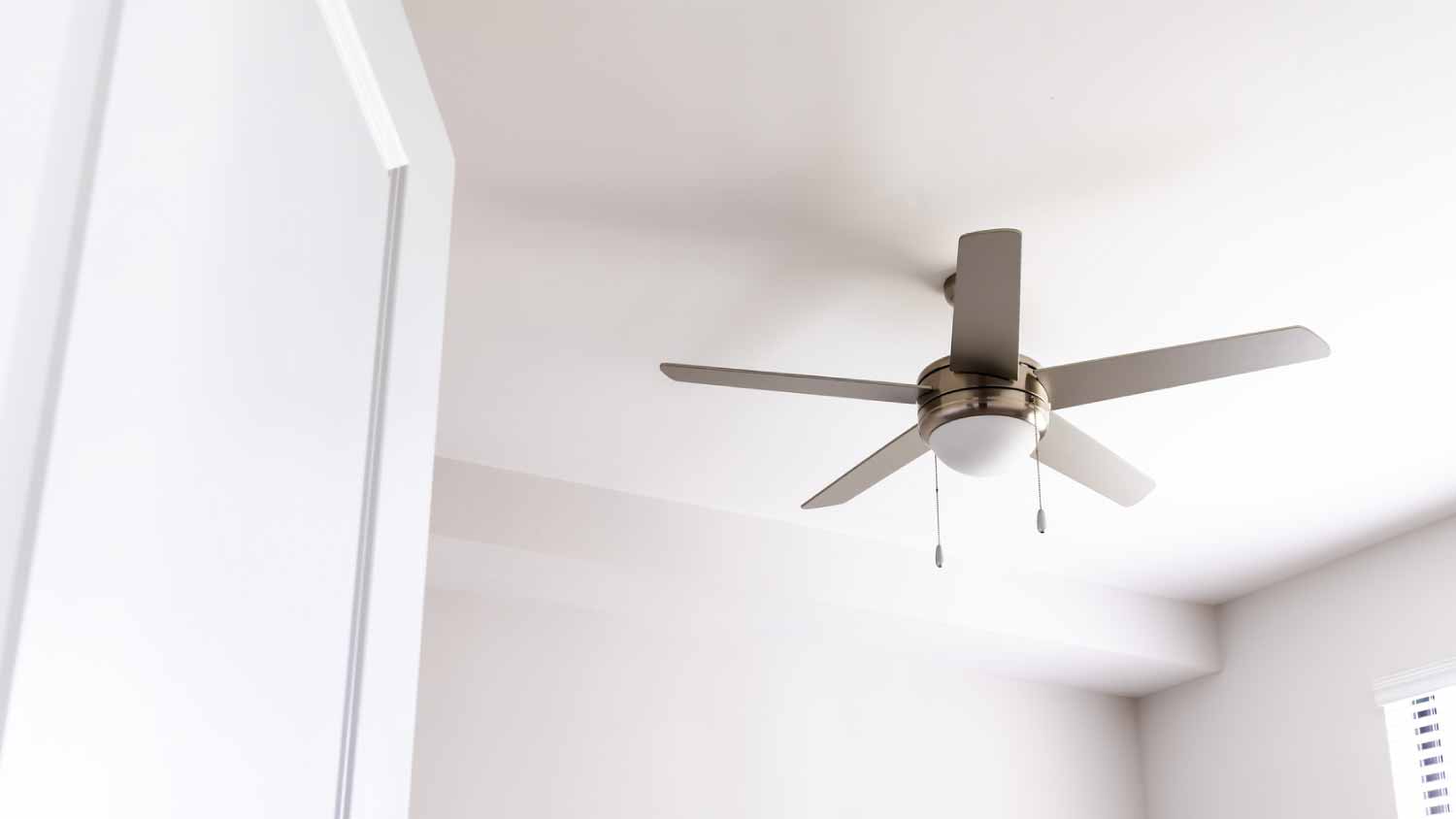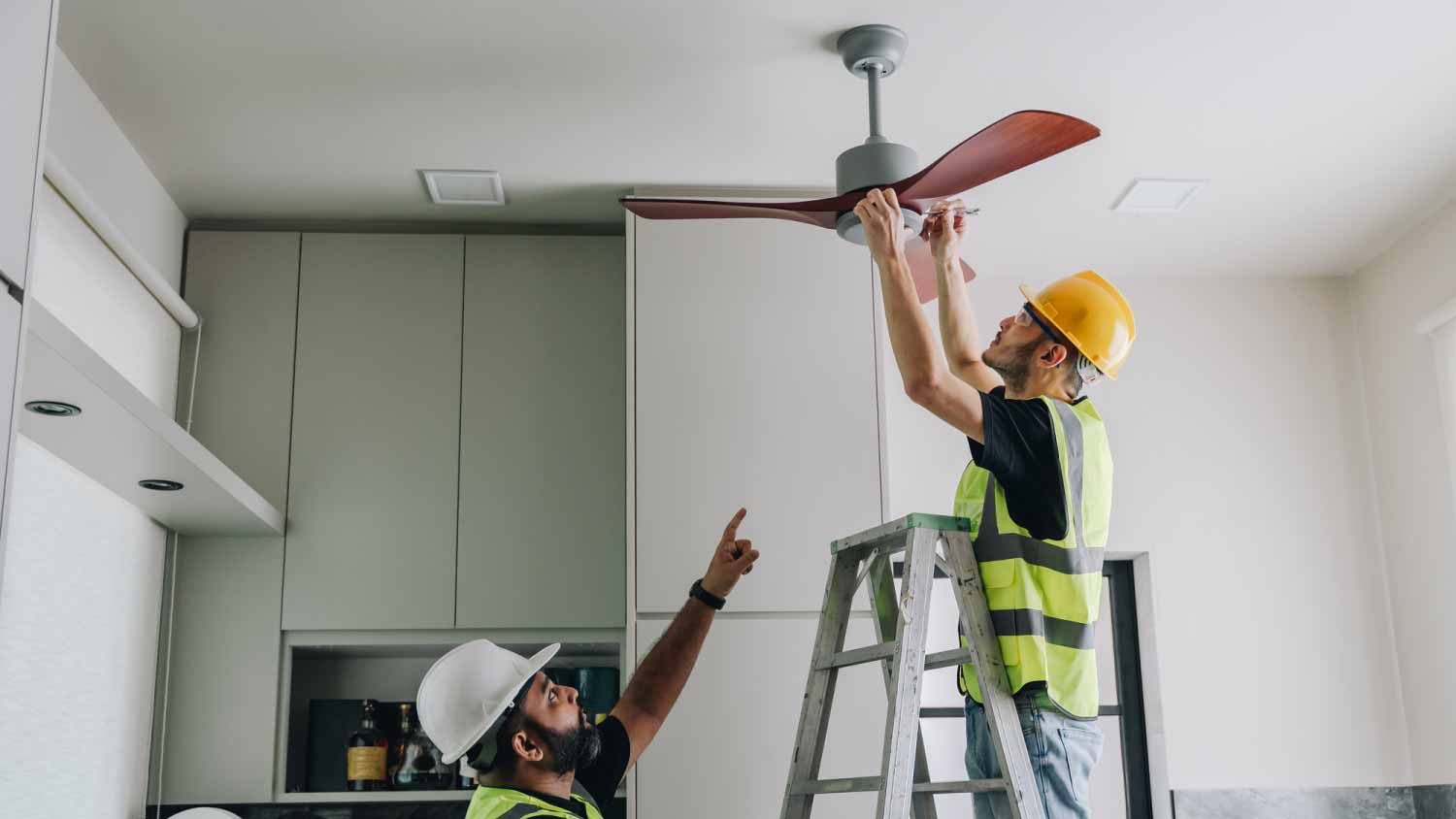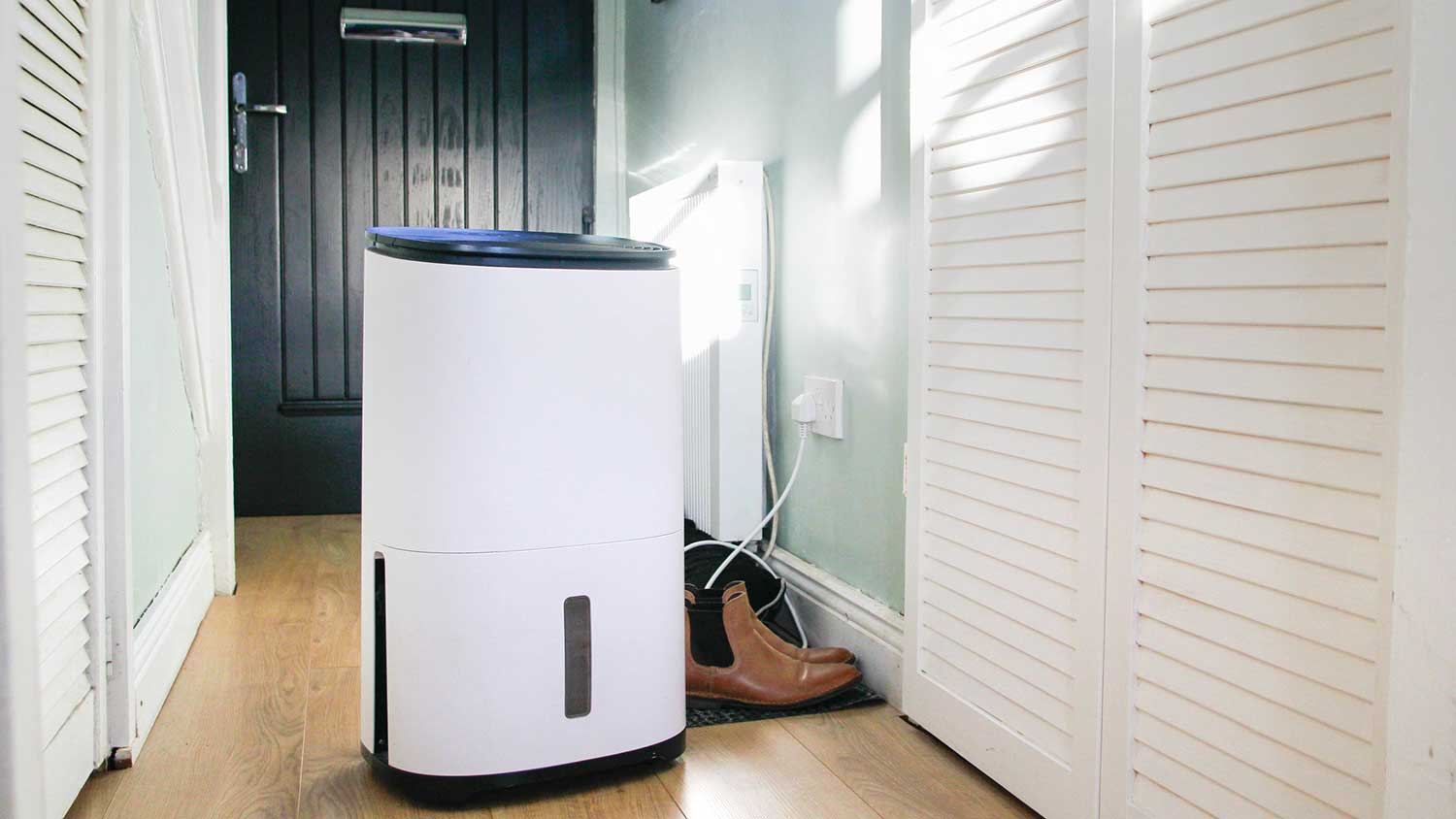Why Is My Ceiling Fan Slow? 5 Reasons Why
Take this advice for a spin


Most fan problems are due to electrical issues.
Dust or poor lubrication can cause a fan to malfunction.
An overloaded circuit could result in a slow-spinning fan.
On average, ceiling fans last between 5 and 15 years.
1. Too Much Dust

Ceiling fans gathered dust at an astounding rate. When the fan blades get coated with dust, it creates air drag and adds weight to the fan blade, resulting in slower rotation. This is a problem that every fan will have at some point. While reducing dust at home can be a challenge, it is also one of the easiest fixes.
How to Fix It
Use a ladder to clean the fan blades safely.
Dust the blades first, spray them with an all-purpose cleaner, and then wipe clean with a microfiber cloth.
A cleaning product with an extendable duster arm is a good solution for hard-to-reach places.
2. Bearings Have No Lubrication
Ceiling fans spin with little resistance, thanks to properly oiled bearings. Over time, the oil can dry out or even leak, which causes excess friction in the fan, slowing it down. If you're not aware you need to lubricate your ceiling fan, you're not alone. Older fans are usually in need of this step, not only because it can slow the fan down, but because bearings with no lubrication can lead to the motor failing as the fan is forced to work harder than intended. A dead motor leads to expensive ceiling fan repair costs.
How to Fix It
A professional fan expert or an electrician should be able to diagnose this problem.
If you want to DIY this problem, make sure you use a sturdy ladder, as you need to have the fan at eye level.
You can use lubricant drops or spray lubricant such as WD-40. There should be a hole for oil above the blades.
3. Faulty or Failing Capacitor

Capacitors store electric charge and are a common point of failure in ceiling fans. These devices smooth the flow of electricity from the circuit to the fan motor. If this sounds complicated, that's because it is. This issue requires professional know-how.
How to Fix It
As this is not a DIY job, call a local professional to handle capacitor issues.
An electrical pro will test the unit with a multimeter.
Faulty capacitors are usually replaced, not repaired.
4. Faulty or Failing Wiring
If your fan is experiencing electrical issues, it could also be due to old wires or wires that have become loose. This issue causes electrical resistance and electrical arcing, both of which can lead to electrical fires. A key giveaway of bad wiring is a buzzing sound coming from the fan. If you hear this, you should call a pro ASAP.
How to Fix It
A pro will check the wires leading to the fan unit.
Bad wires can be fixed, but since they are inexpensive, they’re often replaced.
Loose connections will need to be tightened.
While you can wire a ceiling fan yourself, we don’t recommend DIYing a repair unless you have extensive electrical experience.
5. Overloaded Circuit
The first sign of an overloaded circuit is a tripped breaker. If you notice one of the switches on your circuit board has been flipped, it's a common symptom of an overloaded circuit. However, it can also mean there's a ground fault or a short circuit in the system. Flipping the switch yourself isn't a big deal, but other than that, you should rely on a professional to diagnose and check your circuit board.
How to Fix It
Try flipping the switch. Oftentimes, you overload this system temporarily.
If you have too many power-hungry appliances running, they can overload the circuit.
If the circuit is tripped repeatedly, you may need to replace it.
When to Call a Pro
Since many of the issues that lead to a slow ceiling fan rotation are electrical, It's a good idea to call a pro to ensure safety. While dusting a fan is pretty low-key, checking wires or circuits isn’t for everyone. Even if you’re comfortable doing electrical work, you should also be comfortable working high up on a ladder. We recommend talking to a local electrician as they are best suited to handle any problem that isn’t dust-related.
Frequently Asked Questions
If your ceiling fan is humming, that's usually a sign of an electrical issue. A low-pitched grinding sound could be caused by the motor or a lack of lubrication in the bearings, but a true humming sound will be caused by a failing capacitor or faulty wiring. Unless you have experience with electrical issues, you should call a pro for any ceiling humming noises.
If you think your fan needs to be oiled, the first thing that you have to do is cut the power to the fan. The best and safest way to do this is by flipping the circuit breaker that leads to that room. Depending on the model of your fan, you may need to remove a cover. Look for a hole labeled oil. If there isn't one, check the manual or look for schematics online. Once located, use the recommended lubricant or spray.
The number of blades for your fan poses both advantages and disadvantages. Typically, the more blades on a fan, the better the air distribution and cooling effect, but this also means that your fan will have more wear on its motor. For small rooms, three-blade fans should work fine. For larger areas like living rooms, four or five-blade fans might be the better option.





- Furnace Repair
- Air Conditioning Repair
- HVAC Repairs
- Furnace Installation
- Wood & Pellet Stove Repair
- Dehumidifier & Humidifier Repair
- Heat Pump Companies
- Swamp Cooler Repair
- Wood Stove Services
- HVAC Companies
- Commercial A/C Repair
- Geothermal Installation
- Air Conditioning Installation
- Boiler Repair
- 24 Hour Furnace Repair
- Geothermal Repair
- Heat Pump Repair
- Humidifier Installation
- Thermostat Repair
- Thermostat Installation
- Nest Installation
- Heating & Cooling
- Heating Repair
- Furnace Cleaning
- Furnace Tune-Up
- HVAC Technicians
- Subcontractors
- Furnace Maintenance
- Plumbing & Heating Companies
- Wood Stove Inspection
- Mini Split Installation
- Wall Heater Repair
- Duct Installers










